Hobbies, Working on a Model Train Car
Hello, and welcome to my page!
I don't normally do very much work on my various hobbies in the summer time, I'd rather be outside when I can. In the winter, that changes. I don't much care for cold weather now, I'm a lot more sensitive to it than I was when I was younger. Once my mind transitions to winter, I start thinking about my indoor hobbies. I have several different hobbies that I enjoy, model railroading is one of them.
I enjoy railroad modeling in several different scales, from the smallest that I have, HO scale, to G scale. HO scale is 1/87 scale, which means every real inch is 87 scale inches.
G scale is actually several scales that all use the same gauge track. The track is 45mm gauge, which means that the rails are spaced 45 millimeters apart, from the inside edge of the rail heads. The real standard gauge railroads use a gauge of 4 feet, 8 and 1/2 inches between the rails. G gauge track is used for both standard gauge and narrow gauge trains. Standard gauge model trains for G gauge track are either 1/32 scale, which is the closest standard gauge scale for 45mm gauge, or 1/29 scale which has become more popular despite the fact that the gauge of 45mm track is not quite correct for standard gauge.
For narrow gauge track, 45mm track represents 1 meter narrow gauge at 1/22.5 scale, the previously most popular and available size trains for G gauge track. Most of the original g scale engines and cars from companies such as LGB or Bachmann were made in that scale.
In the late 1990s, a new scale started to appear in the U.S. People started making railroad cars and modifying available engines to 1/20.3 scale. This scale makes 45mm gauge track correct for 3 foot gauge track, the most common real narrow gauge track in the U.S. There are still working examples of 3 foot narrow gauge railroads in the U.S., all of them now tourist railroads such as the Durango & Silverton railroad in Colorado.
The most recent scale development for 45mm gauge track that I'm aware of is the scale of 1/13.7 scale. This scale was developed to use 45mm gauge track to properly represent 2 foot gauge railroads. 2 foot gauge was mostly an industrial and mining railroad gauge, but in the state of Maine, there were several common carrier 2 foot gauge railroads, and parts of those have been preserved as museum and tourist lines.
I know that in Europe and Great Britain, there were various other narrow gauge lines, but I am not as familiar with those gauges. I do know that there were various peat hauling narrow gauge railroads, and quarry railroads, and also the 60cm gauge "trench" railways of WW1.
Now, having explained all of that, this is the railroad model that I've been working on, the subject of this post.
This is a plastic model kit in 1/35 scale, a stationary display kit of a heavy duty flatcar. These 1/35 scale kits aren't meant to be run on a model railroad, but I wanted to make mine so that I could run it on G gauge track.
The first problem with that is that these models are made for standard gauge track in 1/35 scale, which works out to 41mm gauge. The model comes with a section of plastic track to display it on, you have to put it together like the rest of the model. This is a picture of the difference in the gauge of 1/35 scale track and 45mm gauge track. The wheel sets on the model track are from the flatcar kit. The assembly on the larger track is one of the flatcar trucks, or bogies as they call them "across the pond", that I modified to be able to use 45mm gauge wheel sets.
The ties on the G gauge track are out of scale for the car, being 1/22.5 scale ties. The 1/32 scale ties are smaller and more like the plastic track that comes with the flatcar kit.
This is the mostly finished car with both bogies in front of it. There are a few small detail parts and decals that have not yet been put on the model, and the "wood" deck still needs to be painted.
This is a closer look at the trucks. The one on the left has been modified by making it wider, and the one on the right is as built.
I had already built most of this kit when I decided to try to make the car work on G gauge track. That meant that I had to take the trucks apart, hopefully without breaking any of the parts. I cut the first one apart with a small hobby saw. I modified the truck sideframes with nylon bushings so that I could use wheel sets with metal axles without damaging the plastic of the sideframes from friction when running the car on the track. You can see the bushings on the inside face of the sideframe here.
This picture shows the outside face of the sideframe as well as the inside face. These sideframes are from the second truck after I took it apart and put the bushings in. I was able to take this truck apart without having to resort to the hobby saw.
I cropped one of the pictures to get a good close-up of the modified truck. You can see the spacers that I put between the center section of the truck and the sideframes to make it wider. The spacers are the white plastic. I also had to replace the end beams with plastic sections because the ones for the model are too short once you make the truck wider.
You can also see the G gauge wheel sets that I used for this truck. I modified the wheels to the minimum dimensions for G scale wheels so they would look a bit more scale than the standard G scale wheels would look, and would still be able to run on G scale track reliably.
I will have to paint the spacers and end beams before I put the trucks back onto the car. I had attached the trucks to the underside of the car with a screw when I built the model so that they would turn on curves, so when I put them back on, I'll just use the screws again.
I still need to finish this project, but I'm easily distracted by other hobby projects, so who know when I'll actually get this flatcar done, fairly soon, I hope. The next 1/35 scale railroad car that I build will be made to use G gauge wheel sets when I build it so I don't have to modify it later.
Thanks for stopping by my page to read this long winded post!
I hope you found it interesting, or at least entertaining!

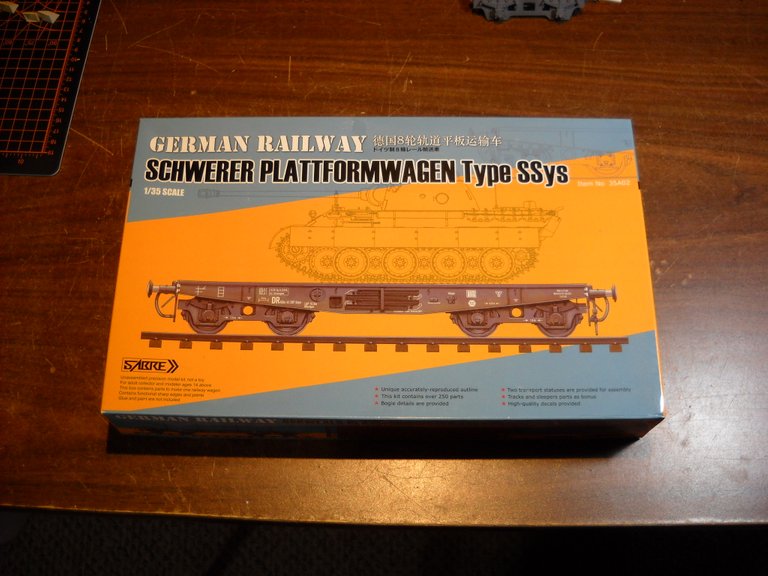
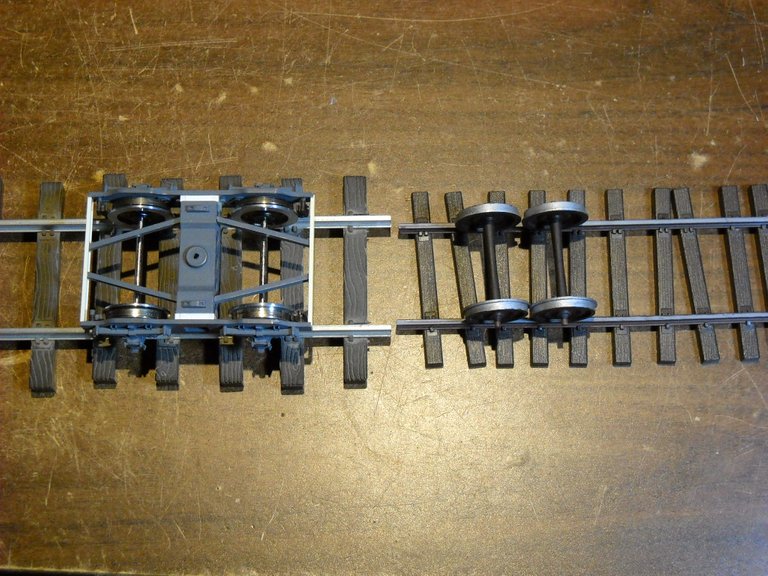
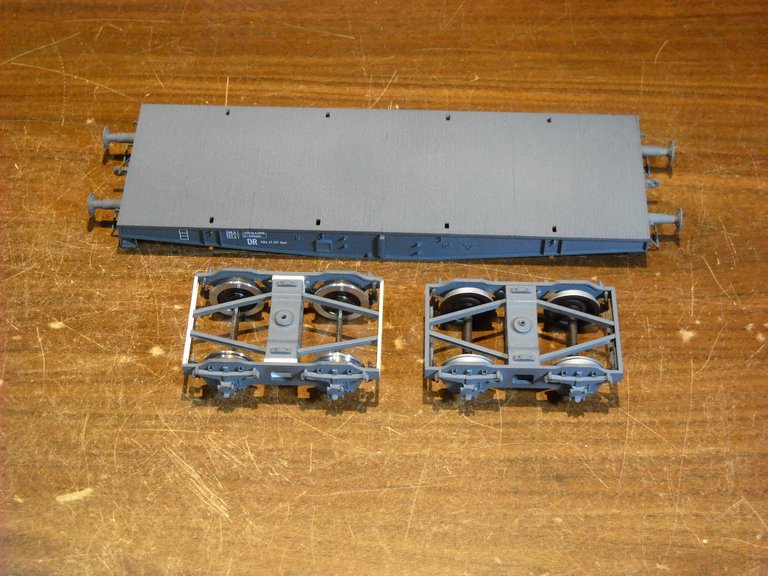
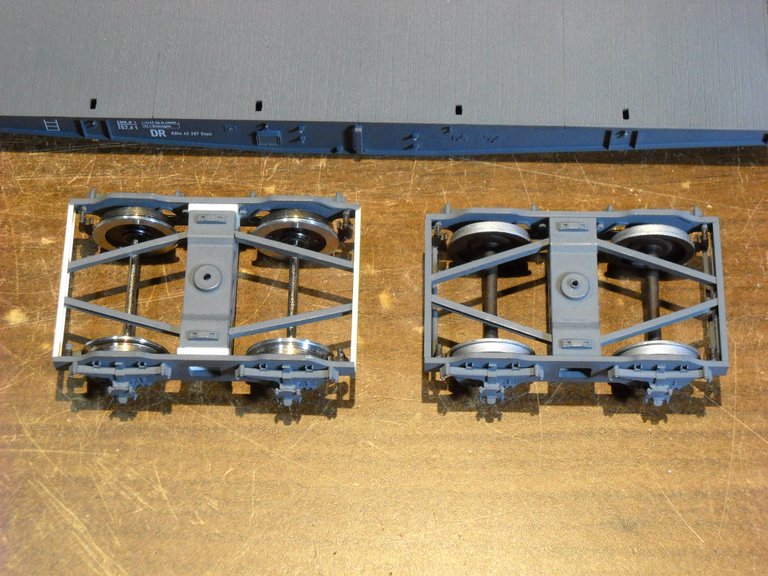
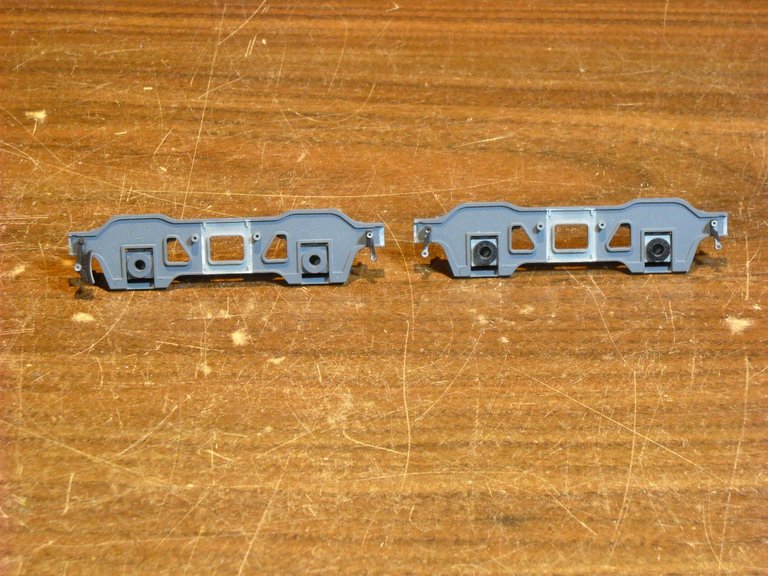
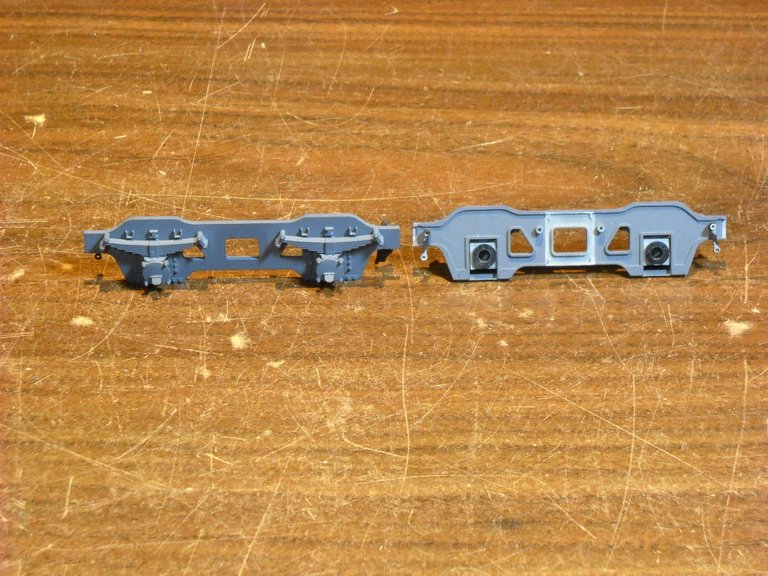

!discovery 20
This post was shared and voted inside the discord by the curators team of discovery-it
Join our community! hive-193212
Discovery-it is also a Witness, vote for us here
Delegate to us for passive income. Check our 80% fee-back Program
Welcome to the beautiful world of model railways :)
You can look up my blog. I have posted a lot about my project. Maybe you find something useful :)